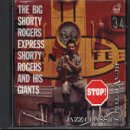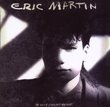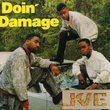| All Artists: Shorty Rogers Title: Big Shorty Rogers Express Members Wishing: 1 Total Copies: 0 Label: Bmg Int'l Release Date: 5/2/2000 Album Type: Import Genres: Jazz, Pop Style: Cool Jazz Number of Discs: 1 SwapaCD Credits: 1 UPC: 743211851923 |
Search - Shorty Rogers :: Big Shorty Rogers Express
CD DetailsSimilar CDs
|
CD ReviewsClassic Big Band Shorty Rogers at his best Jay Nelson | Moses Lake, WA USA | 10/16/1999 (5 out of 5 stars) "If you are a Shorty Rogers fan, this album is a must for your library. All cuts are original numbers by Shorty and are played by his big band, the Giants. Maynard Ferguson, John Graas, Bud Shank, Jimmy Giuffre, and Shelly Manne are just of few of the jazz legends in this band. Recorded in 1953 and 1956, this album is for real big band jazz lovers." The Granddaddy of West Coast Big Band Jazz Robert Spofford | 07/22/2002 (5 out of 5 stars) "What we have here is Shorty Rogers' shining hour: his greatest big band, his finest arrangements (all originals) and his best-loved, most influential recording. And it is certainly a recording to be treasured, because it qualifies as being the beginning and the end of an era - almost simultaneously! The experimental feeling created by the melding of the so-called "Cool School" and the dying Big Band Era was accomplished almost single-handedly by a pair of 10-inch LPs. First was THE MILES DAVIS NONET. Not heard until 1951, it was re-issued in 1956 on 12-inch LP and christened THE BIRTH OF THE COOL by Pete Rugolo. The other was the album in question here: Shorty Rogers' all-time classic COOL AND CRAZY from 1953, also re-issued in 1956 on the 12-inch format as THE BIG SHORTY ROGERS EXPRESS (which the present CD reprints). Incidentally, tracks 1, 2, 7 and 8 are of the 1956 vintage and were used to fill out the latter-day 12-inch LP. Judicious use of your CD player's program button will restore the 1953 10-inch LP to its original cue order.These two albums contained a new type of music which was lithe, brief and quietly-swinging , never sloppy, but neither was it over-polished. And although often credited with ushering in "cool jazz," neither did so. The Davis set had as its impetus Gil Evans' classic arrangements for Claude Thornhill's orchestra, a dance band which he willingly permitted to be transformed into a Petri dish for Evans' mid to late-1940s experiments. As noted, this material preceded the Davis group by a good many years. The difference in notoriety stems from a simple fact: nobody was listening.Meanwhile, Shorty had honed his approach over in Stan Kenton's Innovations Orchestra (1950-1953) a mammoth unit which was simultaneously the most successful (critically) and least successful (financially) venture in big band history. A brash and boisterous bunch, the Kenton charts created by Shorty single-handedly defined his arranging style. Schumann said that Chopin's cycle of Mazurkas recalled to him the notion of "cannon buried in flowers," due to its vacillation between quiet passages and thundering outbursts. If those be the criteria for such a pronouncement, then surely this album rates Shorty Rogers as "The Chopin of West Coast Jazz." Comprised of such studio luminaries as Conrad Gozzo, Maynard Ferguson, Ray Linn, Bud Shank, Bob Cooper, John Graas, Jimmy Giuffre, Bill Perkins, Art Pepper, Shelly Manne & Marty Paich, such an orchestra could produce any effect called for, alternating hushed clarinet and alto sax lead lines with soaring double-C's from the trumpet section.Sadly, within two years, most of these aforementioned wonderful qualities were gone. Oh, the new fellows on the scene and even some of the veterans kept turning out pseudo-cool big band jazz, still following the pioneers in the big picture. They retained the innovative instrumentation which called for the presence of a tuba, French horn and the occasional clarinet, to the point that it because a convention. But in terms of the peculiarities which dignified the great arrangers of the early Cool scene - Rogers, Gerry Mulligan and Gil Evans - these were not upheld. Instead of stripping down, the new men layered-on and lathered-up. Tempos picked up significantly, laid-back ensembles reverted into 1940s crispness, and understated nuances now became overstated ("hey lookit folks, we're playing COOL JAZZ!") Self-caricatures may be unavoidable the longer a "movement" is in vogue, yet somehow Miles Davis, Gil Evans, Gerry Mulligan and Shorty Rogers all continued to grow and prosper for decades. The followers, however, continued to mark time and the record companies continued to commit these mediocrities to vinyl, providing the fodder for East Coast critics to haggle them to their diminution (as they had unjustly attempted to do with the true creators during the early 1950s.)And vinyl was the ideal format, for this was plastic stuff; cutesy confectioneries which were generally reminiscent of the overwrought tra-la-la bilge which 1950s orchestras eventually degenerated into while backing up ballad-spewers and finger-poppers (only minus the vocals.) And don't kid yourselves that to a man, every single "West Coaster" drawing a paycheck in every last section didn't know it - and hate it. There is a reason why the terms "Cool School" and "West Coast Jazz" evaporated around the mid-1950s, displaced by a single, justifiably sneering phrase: "Hollywood Jazz," which is itself a paradox of laughable suggestion.I'm sorry to say it folks, but by 1955 the magic was gone. Switch on over to Miles Davis and Bill Evans (Gil Evans too, who never cut a bad album from 1957 to 1964) and the other moderns like Thelonious Monk and Sonny Rollins around 1955 or 1956. There are of course a handful of great sets from Shorty from the mid-1950s on, as well as some classic big band sessions from Pete Rugolo, Johnny Richards, Marty Paich, Maynard Ferguson and Stan Kenton during the era. Precious few of these, however, are available on CD. Personally, I will continue to listen to my old pre-1954 West Coast 10-inchers while avoiding the over-arranged, over-precise, overly-derivative efforts of the latter-day men. Compared to the completely dispensable re-treading of old roads which passes for jazz in our own time, the later 1950s stuff may strike some as genius. But in comparison to the true genius which spawned it, it remains merely a pallid shadow. SHORTY ROGERS' "COOL AND CRAZY" LIVES!"
|




